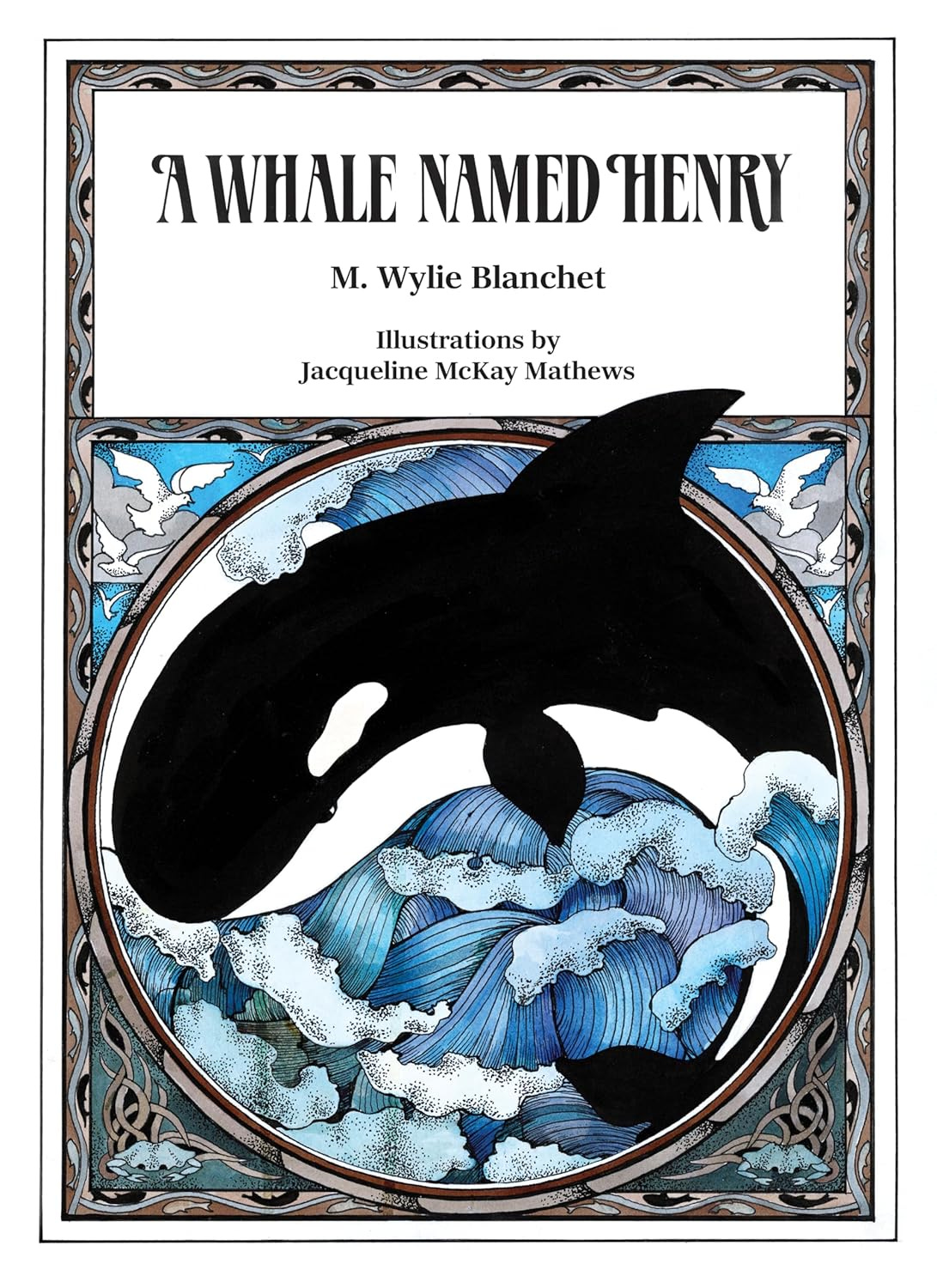A Whale of a Tale, With an Irresistibly Impulsive Protagonist: A Whale Named Henry by Muriel Wylie Blanchet
Reviewed by Melanie Jackson
A Whale Named Henry was originally published by Harbour in 1983. Now, in a new 2024 Harbour edition, the incorrigible Henry has resurfaced.
“Henry didn’t have the sense to be worried when he should be. That was the trouble with Henry.”
No young reader likes a goody-goody. Where’s the adventure, the fun, with a well-behaved protagonist? Imagine Green Gables’ Anne stoically enduring Gilbert’s mockery of her carrot-coloured hair. Bo-o-r-ring! But crack a slate over Gil’s head, we’re talking literary immortality. Equally, if Tom Sawyer had painted the fence, instead of conning other kids into doing it—well, yawns all round. And no kid, ever, would reach for a comic book titled Dennis the Meekness.
Younger, and indeed often older, readers prefer protagonists who live out what they only dare to daydream. The late British Columbia writer M. Wylie Blanchet took this beloved story tradition an innovative step—well, fin splash—further. In A Whale Named Henry, Blanchet transferred irresistible misbehaviour to a nonhuman youngster: a killer whale.
The protagonist’s mother repeatedly warns, nags, and pleads with Henry to stay in the safety of their pod. Out on his inexperienced own, terrors would await. In the Strait of Juan de Fuca, freighters’ “great, thumping propeller blades could slice a soft young whale in two.” The polluted brown waters around pulp mills could poison him. Most of all, Mom worries that Henry “would chase after some fat, frisky salmon into narrow-necked inlets or bays where fishermen could corner him and take him away forever.”
Of course, our big lug, 30-foot long Henry, disappoints mom but not us. Off he swims after a salmon into the “great, swirling tidal rapids at Skookumchuck.” In another nice bit of innovation, not to mention poetic writing, Blanchet has the strong waters laugh at and taunt him. Meanwhile, seagulls smack their beaks at the thought of a tasty dead whale for dinner.
Not everyone Henry encounters is nasty. A helpful kingfisher advises our hero that, oh Henry!, rather than making progress toward home, he’s been swimming round and round an island. Then there’s a wing-injured gull, Timothy. So named, the gull confidently explains—and here’s some delightful Lewis Carroll-like nonsense—because his soft webbed toes are pink.
Unable to dive for his own food, Timothy relies on Henry. And, ideal protagonists being reckless but also capable of moral growth, Henry obliges. But don’t worry. He’s grumpy, not goody-goody, about it.
Surging to its climactic moment, the story presents, as you’d expect, a greedily smirking fisherman: “I bet that big fella’d fetch a hunnerd grand.” Much satisfying suspense follows. This being a kids’ story, no spoiler to say that Henry survives, happy and (sort of) wiser.
One last droplet of a note to close on. The illustrations by Jacqueline McKay Mathews, in glorious black and white, are an exquisite accompaniment to A Whale Named Henry. And, being so lively, they will make many readers’ fingers itch to grab a pencil and start sketching their own whales, fish, and birds. They did mine.
About the Author
Born in Montreal, Quebec, Muriel Wylie Blanchet (1891-1961) grew up in Lachine. With dad Charles Alan Liffiton, Muriel frequently sailed the St. Lawrence. She loved exploring the river and surrounding woods, and finding out about the animals dwelling in both.
As well as being athletic, Muriel excelled in academics, winning the top-student prize at St. Paul’s Academy in Westmount. Against expectations, Muriel didn’t pursue her studies into university. Instead she married banker Geoffrey Blanchet and moved to a home near Swartz Bay, B.C. Following Geoffrey’s death by drowning, possibly a suicide, a few years later, Muriel rented out the family home in the summers and sailed with her five children up and down the B.C. coast in the family boat Caprice. From that boat, she acquired the nickname “Capi.” Among other travel writings, Muriel wrote about their adventures in A Curve of Time (1961).
About the Reviewer
A former journalist, Melanie Jackson is a free-lance Vancouver writer/editor for corporate communications, magazines, and newspapers.
Melanie is also the author of such middle-grade/young-adult suspensers as the Dinah Galloway Mystery Series (Orca Book Publishers). Like Henry the whale, Dinah is the impulsive type. Other novels by Melanie include The Big Dip, Death Drop and Medusa's Scream. The Canadian Children’s Book Centre named the latter a Best Book, Middle Readers, 2018 and gave Melanie a TD-CCBC Book Week touring-author award. For more information, visit Melanie at The Writers’ Union of Canada.
Book Details
Publisher: Harbour Publishing, September 2024
Language: English
Paperback: 48 pages, with black and white illustrations
ISBN: 978-1-990776-95-3




